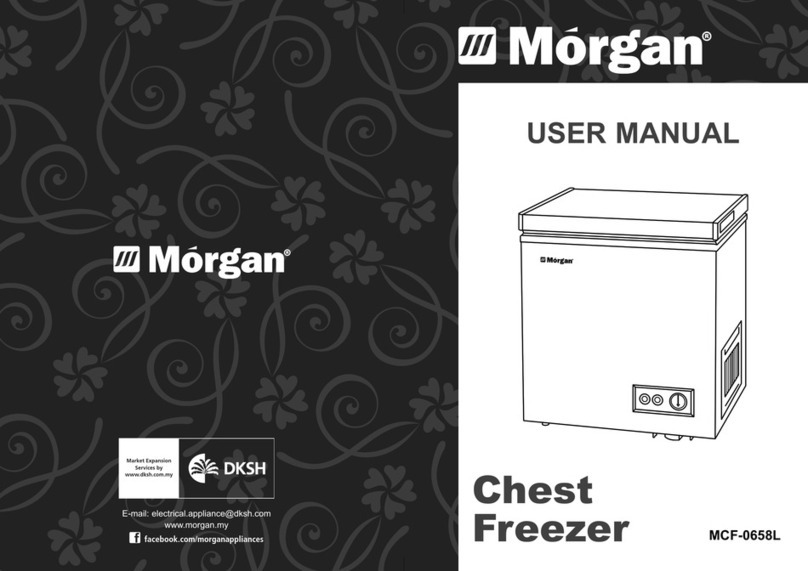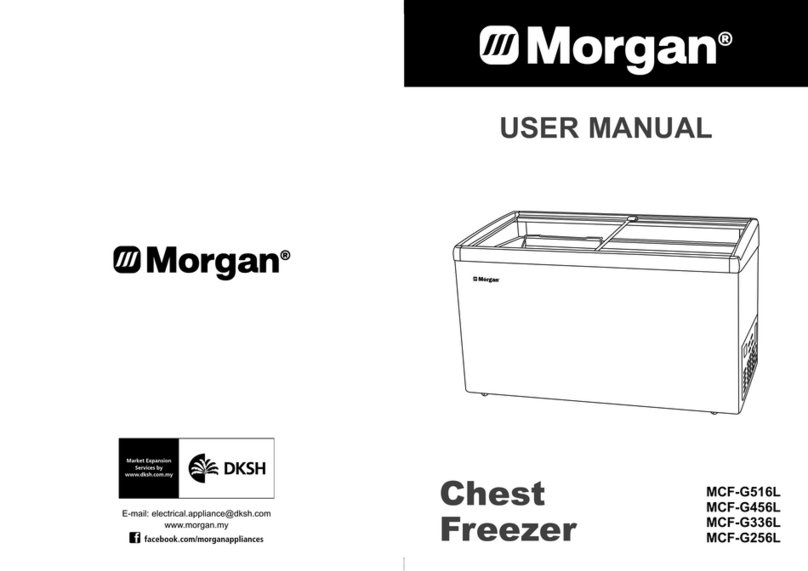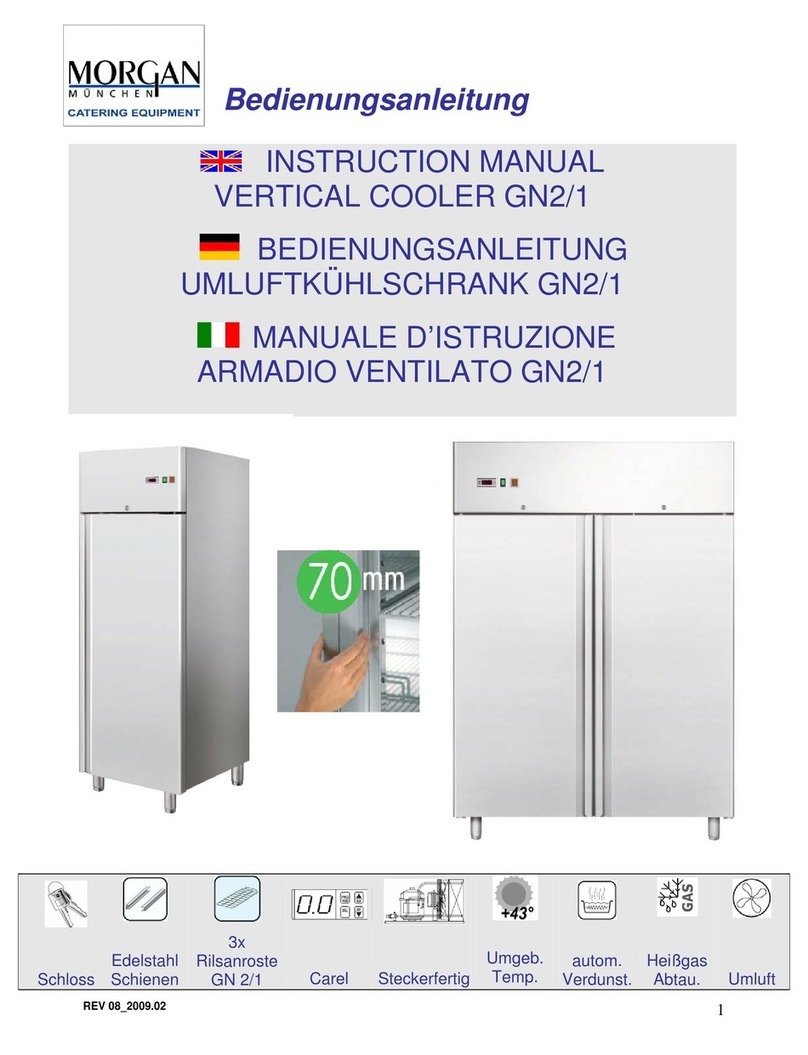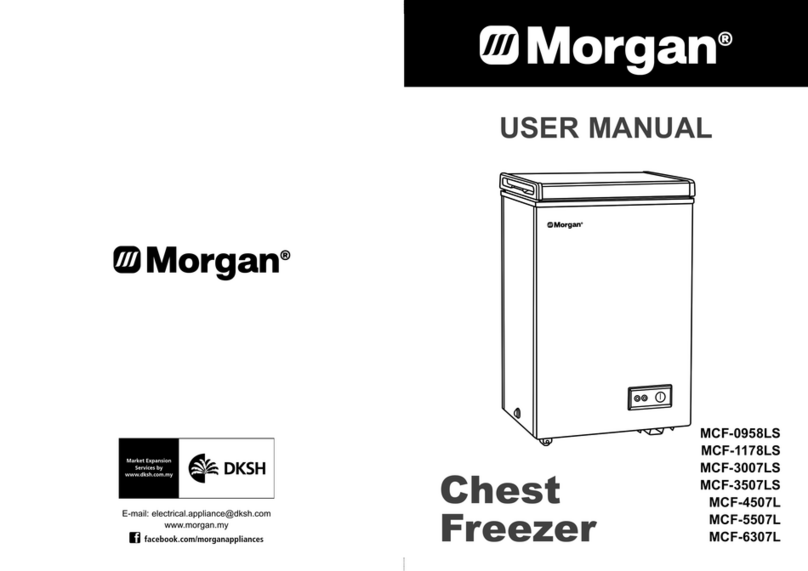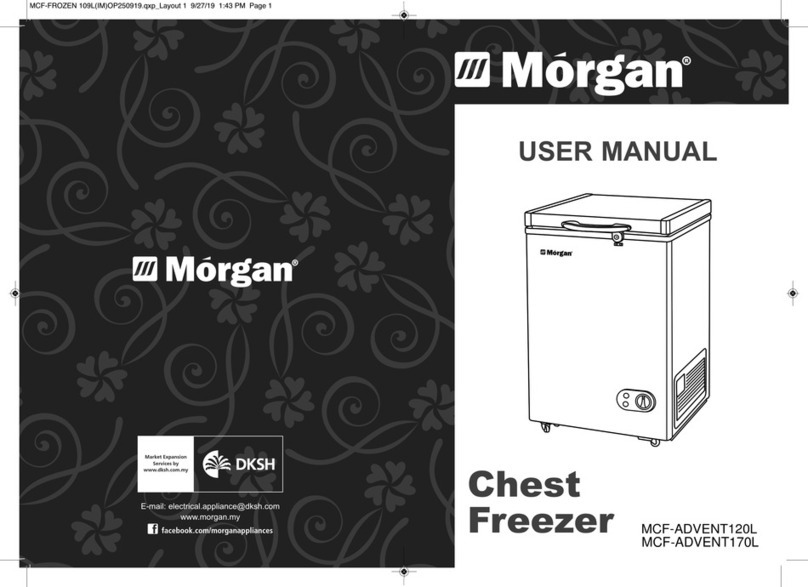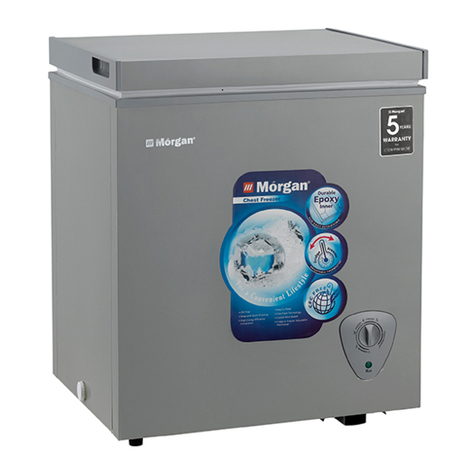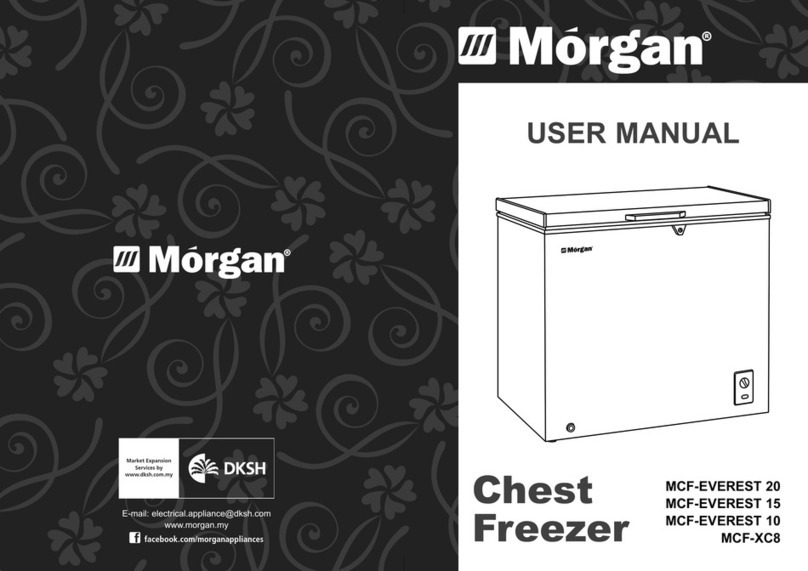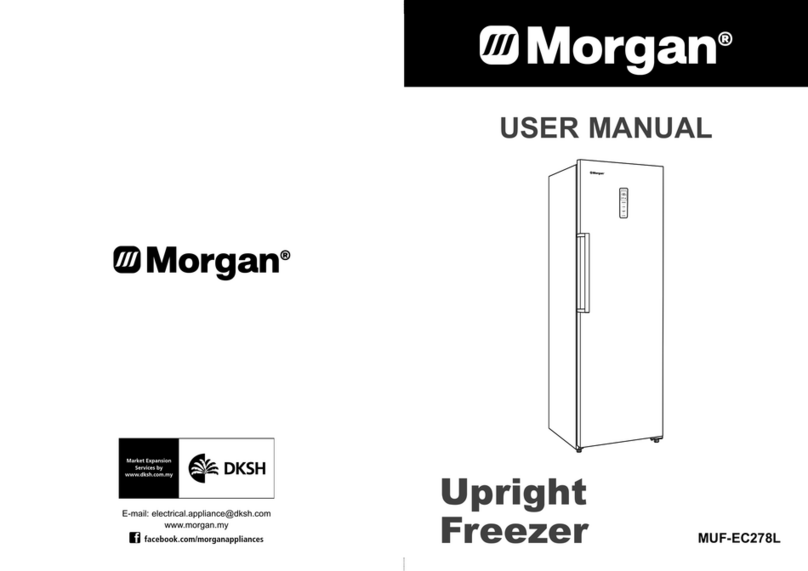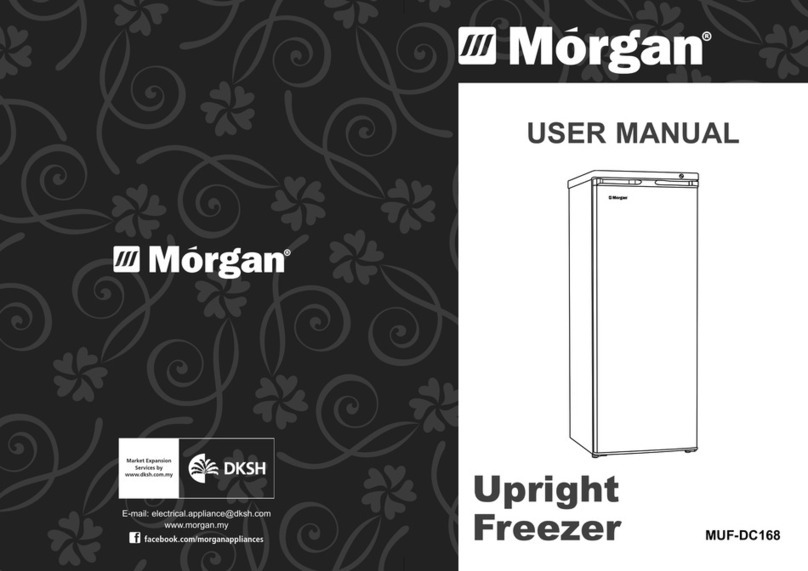
32
MAINTENANCE
• The freezer should be cleaned regularly. When cleaning, turn the power off, remove the foods in the cabinet, clean the interior
using water and a little neutral detergent.
• Do not use boiling water, acid, chemical cleaners, petrol and oil, or dirt- removing powder.
• Dry after cleaning.
• se light soapy water when cleaning the door seal, apply a little talcum powder on it after natural drying to extend its service
life.
• se soft cloth with water or a little mild detergent to clean the exterior surface. NOTE: Do not allow the power supply socket
and lower part of the connecting wires come into contact with water so as to prevent short circuits.
• Except for common breakdowns, only authorised service technicians should disassemble and repair the freezer.. nauthorised
repair of electrical parts including compressor, temperature controller is not recommended.
• Defrost for better freezing efficiency when the frost film in the cabinet is 4-5mm thick.
THE FOLLOWING ARE NOT FAULTS:
• During operation, the freezer may stop for a while to allow the cycling of refrigerants inside the pipes. As such, running water
sound may be present. This is normal.
• The surface temperature of the compressor may be up 70?~80? during operation.
• The rear side of the freezer discharges heat.
• During the rainy season, dew may appear on the exterior of the freezer. This is normal, and not a defect. Just dry it with a piece
of cloth.
TROUBLE SHOOTING
BREAKDOWN CASE REMOVAL METHOD
The p ug is not yet connected to the Rep ug it.
The indicator is not switched on. power supp y.
The compressor does not start. No power Connect the socket to power supp y.
The indicator is on, but the
compressor doesn’t work and The power vo tage is<187V.
buzzes on y Use a power-regu ator more than
The compressor stops a minute after 1000W together.
starting, and restarts after a few The power vo tage is>242V.
minutes, and so repeated y.
The door is opened too frequent y. Avoid opening the door frequent y.
The compressor works norma y, The food in the cabinet is too P ace foods proper y keep a distance
but the temperature inside the much, and p aced improper y. between them for optimum
cabinet owers too s ow y. of co d air.
The frost fi m is too thick. Remove contents and defrost.
The surface of the condenser is dirty. Stop and c ean the condenser.
The door sea is misa igned. Adjust the door sea .
The freezer is not p aced stab y. Position it stab y.
The noise is too oud Certain parts of the freezer are oose. Adjust and tighten oose parts
There is contact between pipes. Separate them.
TRANSPORTATION AND PLACEMENT
• When transporting the chest freezer, the inclination of the cabinet should not exceed 45 degrees. This helps prevent against
compressor or system damage.
• Before use, remove all the packing materials. The rear side of the cabinet should be more than 20cm away from the wall, both
flank sides more than 20cm.
• The freezer should be placed in well-ventilated and dry place. Do not use it under direct sunshine. The freezer should be kept
away from any sink, heat source and any volatile, corrosive materials.
POWER SOURCE AND TEST-RUNNING
• Specified capacity of the wire is 6A. Section squares of the wire is 0.75mm. Single line or compound lines are allowed. The
fuse of 2.5A specified electric current should be installed.(Power cord should be replaced with the same of 6A and 0.75mm,
should it be damaged).
• Single-phase power supply, 50Hz, voltage range 187~242V. If the voltage is unstable, please install a voltage stabilizer with
capacity above 1000W.
• Avoid turning on and off the power too frequently. If the power is turned off, wait for an interval of 5 minutes before turning it on
again.
• When the freezer is not in use for a long time, disconnect the power first, then clean it. Please examine the circuit whether it is
in good working condition before reusing.
FOOD STORAGE
• There must be space between the foods stored in the cabinet, between the foods and the inner surface of the cabinet, so as
to keep good ventilation of cold air and freeze evenly. Do not place any bottled or canned beverage with freezing point above
the temperature in the cabinet when it is below zero.
• For foods that should be moisture-free or lose water easily, wrap them up with hermetically-sealed food storage bags or fresh
films before putting into the cabinet to avoid odour-mixing and reduced frosting.
• Storage of volatile and combustible gases, liquids such as strong alkalines, strong acids, petrol ,etc. should be avoided.
DEFROSTING
• Defrost for better freezing efficiency when the frost film in the cabinet is 4-5mm thick.
• When defrosting, turn the power off, remove the frozen foods, and leave the door open to air-dry and melt residual frost. se
a soft cloth to absorb excess water when cleaning.
• Do not use sharp metal tools such as steel brush to clean the frost film when defrosting so as to avoid evaporator damage.
OPERATION OF TEMPERATURE CONTROL KNOB
• The temperature in the cabinet can be controlled with the temperature control knob.
• The knob should be kept upright normally as indicated in the picture. FREEZING MAX is the
strongest cooling position and is suitable for fast freezing. Do not leave the knob at this position
for long.
• Switch back to former position after the food is fully frozen
• The knob on shift “R” is for refrigerating, the knob on shift “F” is for freezing
